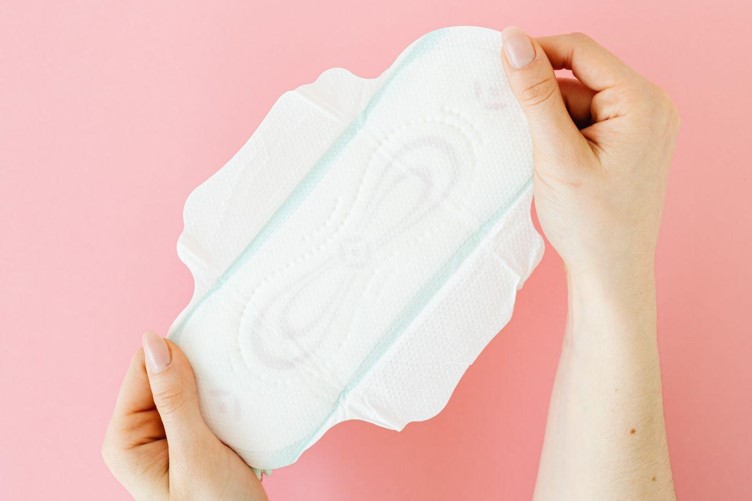
Here is what you will find in this article:
Q1. What are synthetic pads?
Q2. What is the harm caused by synthetic pads?
Q3. When did synthetic pads first surface?
Q4. How easy is it to change?
Did you know, the average sanitary pad out there is a by-product of petroleum, i.e. plastic?
Menses is part of a woman’s vocabulary and is not and should never be an embarrassing or shameful phenomena. All mammals menstruate, this is part of our biology. But this article isn't around gene copies or female power. This article is about being better informed when it comes to making personal hygiene choices which can not only be bad for us (toxins) but can also harm our planet ( eco toxic).
And though manufacturers rarely list the entire components in their pads , most sanitary pads are made from plastic, along with bleached rayon (cellulose made from wood pulp), cotton and synthetic fragrance.
And with the boom of green washing practically everywhere most brands advertise their sanitary pads using words like ‘biodegradable, natural, safe, comfortable, even fragrant’.
The impacts of some of these materials on you and the environment is of serious concern. I will list some of these here in layman terms :
1. The white of Synthetic Sanitary pads comes from a bleaching process which creates dioxin. This is a major eco polluter. Dioxin tends to accumulate in your body over several years.
And because pads are something we wear 5-6 days a month for several years in our lifetime, this exposure can lead to many serious health problems including fertility issues, pelvic inflammatory disease, hormone dysfunction, endometriosis, and various forms of cancer.
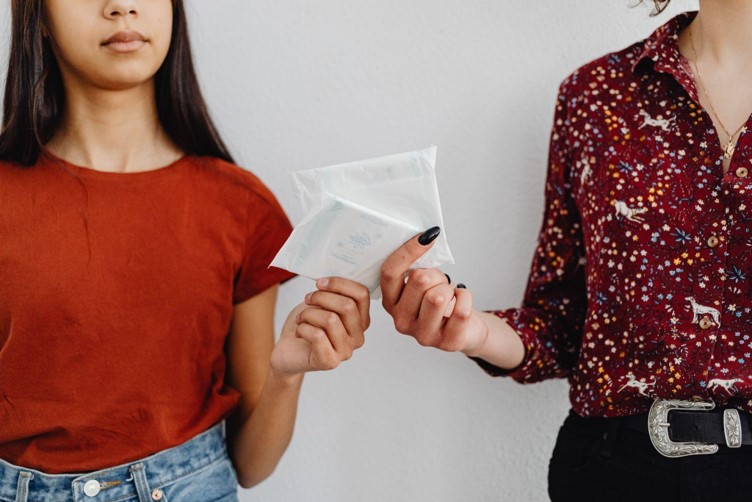
2. Many sanitary pads use Rayon, because it's far cheaper than cotton and helps in absorption. But it also contains dioxin from the bleaching process.
3. The plastic layer often seen at the bottom of pads is there to prevent liquid or air to pass through.
This acts as a trap for both moisture and heat, promoting the growth of yeast and bacteria. Which further leads to sensitivity, burning, chafing and soreness.
4. Low more than ever sanitary pads are scented with artificial fragrance to mask (finger quote) the “odour of period”. These fragrances contain many hazardous ingredients which are not listed due to proprietary concerns. Synthetic fragrances enter our bloodstream and cause serious allergies and side effects.
Most women get period rashes. If you are one of them, have you ever wondered why?
5. Contact dermatitis is when your skin comes in contact with chemicals that can cause a reaction, like a rash or irritation. And most rashes from synthetic pads are because of contact dermatitis. Because there is some irritant in the pad. Contact dermatitis of the vulva is known as vulvitis.
From being first used almost a 100 years ago during WW1 to prevent soldiers from bleeding to what sanitary pads are today has been a tremendous development. The first beltless pads, a precursor to the modern sanitary pad were first seen in 1972. And the 80’s saw pads with wings hit the market.
But over the last 50 years we have also witnessed landfills of pads which have led to problems of their own. Discussions around how we need to opt for more sustainable, eco-friendly options during our periods are now necessary and can not be ignored.
6. 500 years- that’s how long it takes for a regular sanitary pad to decompose. Is that reason enough to switch? A single woman, you alone, can generate up to 125 kgs of non-biodegradable waste during your menstruating years.
7. About 12 billion pads are disposed in India annually, as per WSSCC. In urban India, 13% menstrual waste is dumped in water bodies or in open spaces like grounds near/outside the city or by roadside in large bins. 8% is buried, 9% is burnt and 10% is flushed. A burnt pad

releases harmful toxins like dioxins and furans which are seriously hazardous to our health and the environment.
According to Brihanmumbai Municipal Corporation (BMC) data, about 510 metric tonnes of sanitary pads and diapers are dumped in the city of Mumbai alone every day.
When it comes to biodegradable pads there is a lack of information available which causes women to get confused. The advantages of using natural sanitary pads are far too many to ignore. There are multiple reasons why natural, plastic free pads stand out when compared with synthetic options.
There are two kinds of natural sanitary pads: Cloth pads and Biodegradable pads made out of natural materials like banana fibre, organic cotton, bamboo & corn.
Cloth pads, traditionally used by women ( and over 60% of the rural Indian women) are washable, reusable and sustainable. These are available in organic cotton and are breathable. The only cautious note for washable pads is hygiene maintenance - which means they need to be washed and sun dried. I must point out here that there are some taboos for women in rural areas (India) which centre around them being ashamed of drying their sanitary pads in the open, which may prevent them from drying them in the sun.
In the last few years, the world has seen a revolution in women’s hygiene market. Many conscious women choose to go with eco friendly and biodegradable pads which take less than a year to decompose naturally in landfills.
When buying eco friendly pads, always check the time it takes to bio compose and because they contain no plastic these will generally (over the vast majority of plastic pads) be earth safe. Most genuinely eco friendly brands will give you the timeline information.
Misleading & gimmicky marketing campaigns can however make it difficult for us to choose right even when we want to.
Which is why you should BOP!
Zoobop is here to help you choose amongst the best biodegradable sanitary pads brands for your ease during that time of the month. If you are uncertain about any brand its ingredients or environmental impact, BOP by zoobop.com can save you the time and research! All you need to do is type in the brand’s name and hit BOP!

A detailed page including a clean (or dirty) score from 0-5 - the higher, the better - will appear along with everything you need to know about the brand and its footprint. Finding the best hygiene and menstrual brands have never been easier.
Browse through the best range of Biodegradable pads made in India on Zoo shop and the buying guide which will give you clear options on where to buy and at the best prices. All brands shown in the buying guide would have a score from good- excellent and you can easily see why this score, to understand why one brand is better than the other. All brands are manually vetted for your safety.
Are biodegradable pads really healthy for our bodies?
Sanitary pads are classified as "Medical Products" in India, so they're not legally obligated to disclose what goes into the making of these pads. These are speculated to cause rashes, allergies, skin infections, UTIs, birth defects, miscarriages, ovarian and cervical cancers.
Tampons on the other hand are often associated with toxic shock syndrome, a rare yet serious complication of certain bacterial infections.
You don’t have to worry about the backing on these pads containing harmful chemicals that come in contact with your lady parts. These biodegradable pads do not contain gels, toxic ingredients, or synthetic fibres that causing irritation and infections.
With no thin layers of plastic, the backing on these pads is made to be worn all day and you won’t even notice it’s there! These are way more natural compared to other disposable sanitary napkin products used by women even today.
7 reason to ditch the plastic
Those who have tried using biodegradable sanitary pads say that such a natural product has more benefits than any other kind of pad out there, and that is true. Let’s take a look at some of the reasons why you should switch to biodegradable pads from regular ones.
1. Super comfortable
They’re comfortable and soft against your skin so you hardly notice it’s there.
2. Cloth pads are flexible!
It conforms to the curves of your body and moves along with it. No more worrying about displacing and staining!
3. Odorless days
Since both kinds of pads are more breathable and absorbent, there is almost no odor.
4. Gentler on planet
They are made of earth-safe ingredients like cotton, they are easily decomposed and create less waste. Reusables use fewer resources for their production, transportation, and disposal than disposables.
5. Cloth pad lasts a long time
Being a reusable pad, you can simply wash your cloth pads and wear them again. Washing them is easier than you think. If taken appropriate care of, they can last up to 2 years.
6. Economical
While they may seem expensive at first, cloth pads are economical in the long run. Unlike disposables that are supposed to be changed at least 5 times a day, you only need 5 of the cloth pads to last you years saving you bucks.
7. Obviously, health
Absence of nasty unwanted ingredients, gels and other toxic stuff makes the cloth pads superior and safer for your health. These protect you from a variety of health complications as serious as cancer.
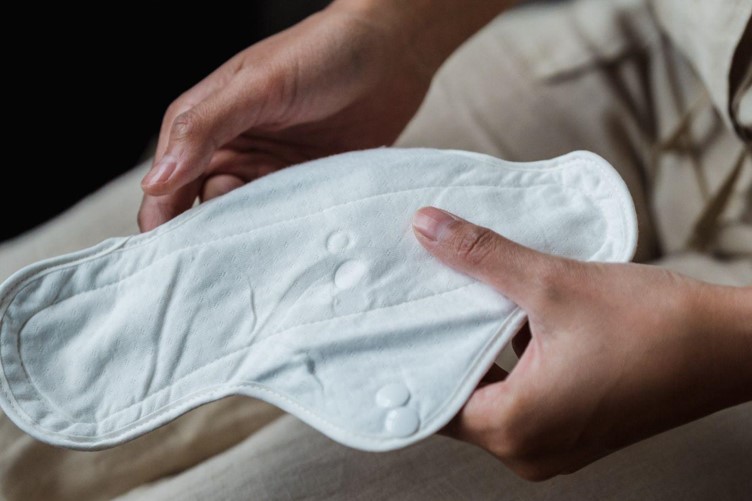
Our pick up for the best products
If you think finding good biodegradable sanitary pads brands is difficult, we got you. Here are the best biodegradable pads made in India that you need in your life:
1.Naari TURT - SUPER HEAVY FLOW OVERNIGHT PAD
Key takeaway:
Made with 100% super soft, super absorbent cotton with leak proof layer. Easy to wash and no stains. Perfect for days with heavy flow or sleeping in since it does not move.
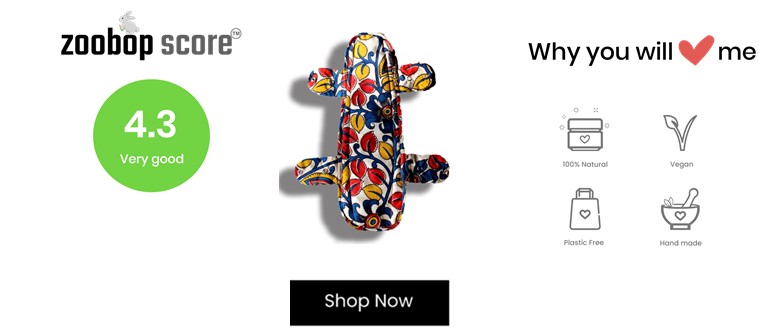
2. Naari PANTY LINER
Key takeaway: meant for spotting and vaginal discharge. Made with 100% cotton with maximum comfort. Long lasting and leak proof.
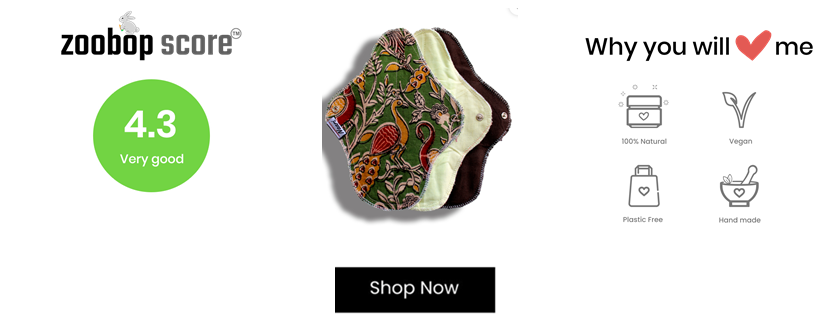
3. Naari JOY MEDIUM FLOW PAD
Key takeaway: highly absorbent and leak proof. Great for days with medium flow and can last upto 6 hours.
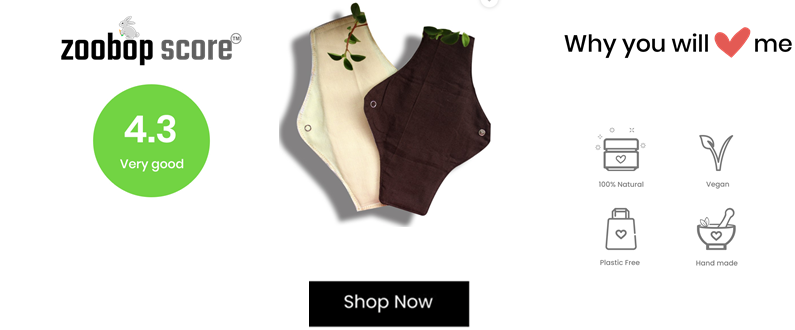
4. Saathi SAATHI REGULAR BAMBOO FIBRE BIODEGRADABLE SANITARY PADS
Key takeaway: gentle on the skin and Mother Earth, disappearing quickly upon disposal. Made up of natural, locally-sourced materials, including banana fiber.
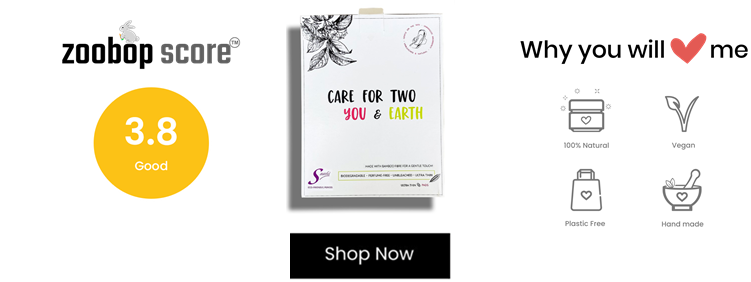
5. Carmesi ECO-CONSCIOUS SANITARY PADS
Key takeaway: it is safe for the planet and safe for you.The top sheet, back-sheet and the wrapper is made up of corn fibre. The fibre is non-irritant to make you feel comfortable throughout the day.
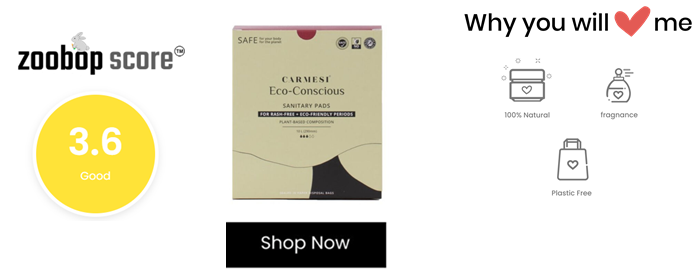
Frequently asked questions:
Q1. Are biodegradable pads really biodegradable?
YES. These pads are made of cloth, bamboo and even corn. All these products are easy to decompose and use lesser materials for production.
Q2. Are biodegradable pads safe?
Absolutely. They are free of synthetic chemicals and gels that can cause various health issues. They are non irritant and odor free as well.
Q3. How do you dispose of biodegradable sanitary pads?
Just like the disposables. You can even make a compost out of them.
Q4. Are cotton pads biodegradable?
Not the ones that you get from the stores. Cotton cloth pads definitely are and we highly recommend using them for maximum comfort and leak proof periods.
It’s finally time to ditch those old plastic pads which have been plaguing your wellbeing and the environment. Make this period better for your body and the environment by switching to biodegradable pads.
What are your thoughts on biodegradable pads? Share with us.